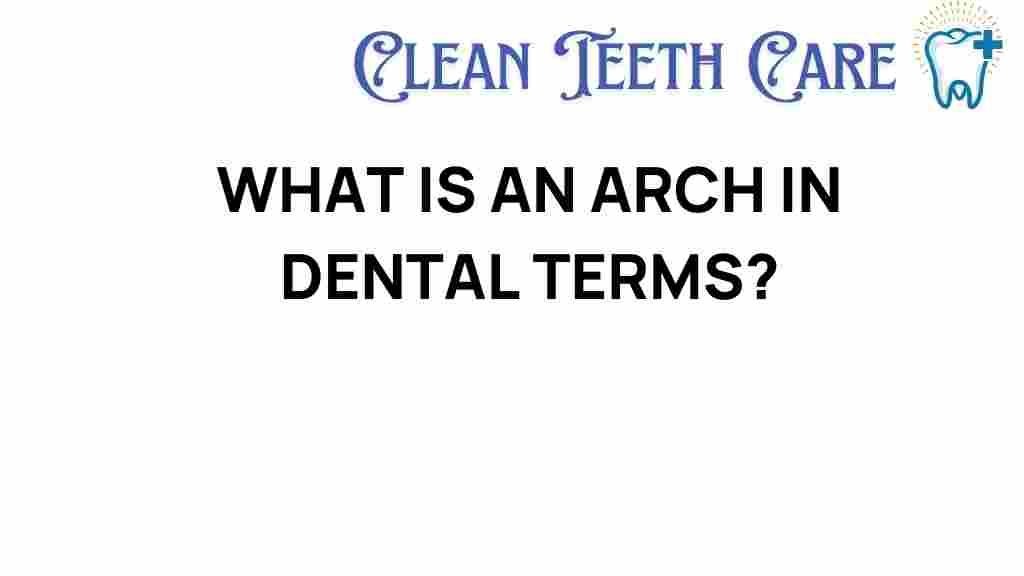Unveiling the Mystery: What is an Arch in Dental Terms?
When it comes to understanding dental health, one term that often surfaces is the dental arch. This concept plays a crucial role in orthodontics, oral health, and overall dental anatomy. In this article, we will explore what a dental arch is, how it relates to smile design, the role of braces in teeth alignment, and its importance in maintaining proper jaw structure and dental care.
What is a Dental Arch?
A dental arch refers to the curved structure formed by the arrangement of teeth in the upper and lower jaws. There are two types of dental arches:
- Maxillary Arch: The upper arch that contains the upper teeth.
- Mandibular Arch: The lower arch that houses the lower teeth.
The shape and size of these arches can greatly influence oral health and aesthetics. A well-aligned dental arch contributes to a balanced jaw structure, which is essential not only for cosmetic reasons but also for proper function when chewing and speaking.
The Importance of the Dental Arch in Orthodontics
In the field of orthodontics, understanding the dental arch is fundamental. Orthodontists assess the dental arch’s form to determine the best treatment plan for correcting misalignments and improving overall oral health. Here are some key aspects of how the dental arch is significant in orthodontics:
- Teeth Alignment: A well-defined dental arch promotes optimal teeth alignment, reducing the risk of issues like overcrowding or gaps.
- Smile Design: The shape of the dental arch is integral to achieving an aesthetically pleasing smile, influencing the curvature and visibility of the teeth.
- Jaw Structure: Proper arch form supports the jaw structure, ensuring that the upper and lower jaws align correctly, which is vital for efficient chewing.
How Braces Work to Improve Dental Arches
Braces are one of the most common tools used in orthodontics to modify the dental arch. They work by applying constant pressure on the teeth, gradually moving them into the desired position. Here’s a step-by-step overview of how braces affect the dental arch:
- Initial Assessment: An orthodontist evaluates the dental arch through X-rays and physical examinations to identify misalignments.
- Treatment Planning: Based on the assessment, a personalized treatment plan is created, which may include specific types of braces.
- Placement of Braces: Brackets are attached to the teeth, and archwires are threaded through them, connecting the braces and allowing for movement.
- Regular Adjustments: Patients return for periodic adjustments, where the orthodontist tightens the braces to continue guiding the teeth into the correct positions.
- Retention Phase: Once the desired alignment is achieved, retainers may be provided to maintain the new dental arch shape.
Common Issues Related to Dental Arches
While a dental arch plays a crucial role in oral health, various issues can arise that may necessitate orthodontic intervention:
- Overbite: When the upper teeth overlap the lower teeth excessively.
- Underbite: When the lower teeth extend beyond the upper teeth.
- Crossbite: When one or more upper teeth bite on the inside of the lower teeth.
- Open Bite: When there is a gap between the upper and lower teeth when biting down.
Maintaining a Healthy Dental Arch
To ensure your dental arch remains healthy, consider the following tips:
- Regular Dental Check-ups: Routine visits to your dentist can help catch potential issues early.
- Good Oral Hygiene: Brush and floss daily to remove plaque and prevent decay.
- Wear Retainers: If you’ve undergone orthodontic treatment, wearing retainers as prescribed is crucial to maintain alignment.
- Avoid Harmful Habits: Refrain from teeth grinding or using teeth as tools, which can disrupt the dental arch.
Understanding the Anatomy of the Dental Arch
The dental anatomy of the arch includes various components that work together to support oral function:
- Teeth: The primary elements of the dental arch, including incisors, canines, premolars, and molars.
- Gums: The tissue that supports and surrounds the teeth.
- Bone Structure: The maxilla (upper jaw) and mandible (lower jaw) provide the framework for the dental arches.
Understanding these components can help you appreciate the importance of a well-formed dental arch in overall oral health.
Troubleshooting Common Dental Arch Problems
If you suspect you have issues related to your dental arch, here are some troubleshooting tips:
- Symptoms of Misalignment: Pay attention to any discomfort, uneven wear on teeth, or difficulty chewing, and consult with a dentist or orthodontist.
- Self-Assessment: Use a mirror to examine your bite alignment and observe if your teeth meet evenly.
- Seek Professional Help: If you notice any irregularities, make an appointment with your orthodontist for a comprehensive evaluation.
Conclusion
In summary, the dental arch is a fundamental concept in orthodontics, oral health, and dental anatomy. Understanding its significance helps in appreciating the complexities of smile design and the importance of teeth alignment and jaw structure. Whether you’re considering braces or want to maintain your dental health, being informed about your dental arch can empower you to make better decisions regarding your dental care.
For more information on orthodontics and maintaining a beautiful smile, consider visiting this resource. Additionally, if you have specific concerns about your dental arch, don’t hesitate to consult your dentist or orthodontist.
This article is in the category Conditions and created by CleanTeethCare Team
